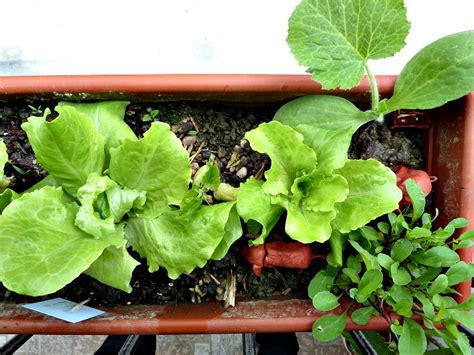Top Tips for Gardening with Kids: Turning Your Balcony Into a Green Oasis
Gardening with kids on the balcony is an excellent way to introduce them to nature while nurturing their creativity and responsibility. Whether you have limited space or live in an urban environment, balcony gardening can provide educational activities for your children and be a source of family fun. This guide will help you get started with tips, container gardening ideas, and suggestions for fostering outdoor learning.
Introduction
Gardening is more than just a hobby—it’s a fantastic learning experience for kids. Teaching children how to grow plants on a balcony, no matter the size, provides valuable lessons about nature, plant care, and patience. Urban gardening is also a practical way to make the most out of small spaces, and container gardening is a versatile option that can be adapted to any balcony. This article will explore key concepts, current trends, practical applications, and ethical considerations to help you and your kids start gardening on your balcony.
Key Concepts
- Container Gardening: Growing plants in pots, planters, or other containers.
- Urban Gardening: Gardening practices suited for cities or apartments with limited space.
- Plant Care: The essential requirements for plants to thrive, such as water, light, and nutrients.
- Outdoor Learning: Hands-on educational activities that take place outdoors, promoting exploration and creativity.
- Educational Activities: Learning-based activities that help children understand plant life, ecology, and responsibility.
Historical Context
Balcony gardening has its roots in ancient civilizations where space was limited. Early examples can be found in hanging gardens and small, urban plots. However, the trend of balcony gardening in urban settings has surged in popularity in recent decades. As cities grew, so did the demand for home-grown produce, even in the smallest of spaces. With this rise in urban living, container gardening became a practical solution for families looking to engage their children in nature-based activities.
Current State Analysis
Today, urban gardening, particularly balcony gardening, has become more accessible and appealing to families with young children. Modern container gardening kits, DIY projects, and kid-friendly plants make gardening a family activity. This trend reflects the growing awareness of sustainability and the desire for green spaces even in city environments. With proper planning, balconies can be transformed into small green oases where kids can participate in creative and educational gardening activities.
Practical Applications
When gardening with kids on the balcony, it’s essential to choose the right plants and set up an environment that promotes learning and fun. Here are some practical tips to get started:
- Choose Kid-Friendly Plants: Opt for plants that are easy to grow, like cherry tomatoes, herbs, and strawberries. These plants grow quickly and can be harvested, offering immediate gratification for young gardeners.
- Use Lightweight Containers: Pick containers that are easy for kids to move and water. Plastic or fabric planters are good choices.
- Create a Watering Schedule: Teach your kids responsibility by assigning watering duties. Make a simple watering chart to help them keep track.
- Incorporate Educational Activities: Help kids learn about photosynthesis, plant lifecycles, and ecology by adding educational books or interactive games to the gardening routine.
- Encourage Creativity: Let kids decorate plant containers with paints or stickers. This engages their creativity and gives them ownership over their gardening space.
Case Studies
| Case Study | Location | Outcome |
|---|---|---|
| Family Balcony Garden in New York City | Urban apartment | Transformed balcony into a green space with small fruit plants. Children learned about plant lifecycles and responsibility. |
| Educational Garden in a Chicago Suburb | Balcony with limited sunlight | Experimented with different types of shade plants. Kids gained hands-on experience with plant diversity and ecosystems. |
Stakeholder Analysis
Balcony gardening benefits not just the family but also the broader community. Here’s how different stakeholders are impacted:
- Children: Develops responsibility, patience, and creativity through direct interaction with plants.
- Parents: A cost-effective way to engage children in educational activities and promote family bonding.
- Urban Communities: Promotes green spaces and sustainable living practices in dense, urban environments.
- Environment: Balcony gardening can contribute to air purification and biodiversity in urban areas.
Implementation Guidelines
To implement a successful balcony garden with kids, follow these guidelines:
- Assess Your Space: Measure your balcony space and understand its light exposure to select appropriate plants.
- Start Small: Begin with a few easy-to-grow plants like herbs or vegetables. Gradually introduce more plants as kids get comfortable with gardening tasks.
- Use Vertical Space: Maximize the use of space by using vertical planters, hanging baskets, or shelves to accommodate more plants.
- Engage Kids in the Planning Process: Allow your children to participate in choosing plants, decorating containers, and planning the garden layout.
- Plan for Maintenance: Regularly check for pests, dead plants, and overgrowth to teach kids plant care and maintenance.
Ethical Considerations
While balcony gardening offers numerous benefits, ethical considerations arise regarding the sustainability of materials used and the environmental impact of gardening practices. For example, families should be mindful of the types of fertilizers and pesticides used, opting for organic alternatives where possible. It’s also important to consider the environmental footprint of imported plants versus locally grown varieties.
Limitations and Future Research
Balcony gardening with kids is not without limitations. Space constraints can limit the variety of plants, and weather conditions may restrict outdoor time. Future research could explore advancements in vertical gardening technology or sustainable, child-friendly gardening kits for urban families. Additional studies might investigate the long-term impact of early exposure to gardening on children’s environmental consciousness.
Expert Commentary
Experts in urban gardening emphasize the importance of early childhood exposure to nature. “Gardening on balconies provides a rare opportunity for city-dwelling children to connect with nature,” says Dr. Greenleaf, an urban horticulture specialist. “It fosters a sense of responsibility and environmental stewardship that can last a lifetime.” Environmental psychologist, Jane Seedling, adds, “The hands-on learning approach of balcony gardening is incredibly effective for young children, who are naturally curious about the world around them. It builds important life skills like patience, creativity, and critical thinking.”


